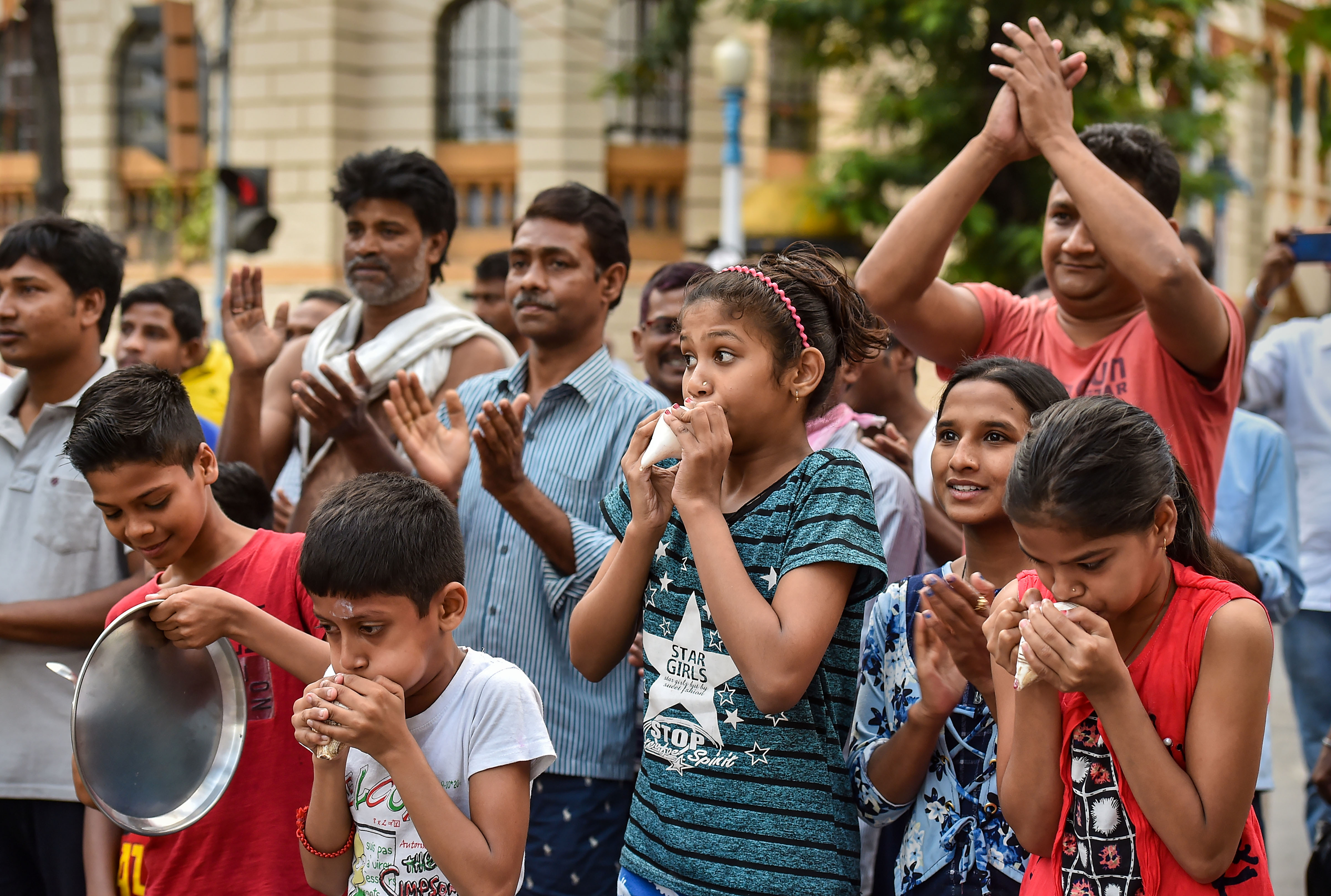
Modi must listen to corona alarm bells, not claps and thaalis
Now that Prime Minister Narendra Modi has got his corona thaalibration, can we expect him to come up with a serious strategy to deal with the pandemic? It is becoming more and more apparent that Modi’s only solution to a problem is turning it into an event through mass mobilisation.

Now that Prime Minister Narendra Modi has got his corona thaalibration, can we expect him to come up with a serious strategy to deal with the pandemic?
It is becoming more and more apparent that Modi’s only solution to a problem is turning it into an event through mass mobilisation. At crucial times in history, he has shown a penchant for being a puppeteer rather than a leader, and a preference for pulling strings to make gullible people dance to his moves. Sunday’s ‘Janata curfew’ followed by an embarrassing display of tokenism when Indian banged thaalis, rang bells and clapped in masses before dancing around in the streets as if a war had just been won, was another display of his puppetry.
The embarrassing display where thousands got together in the evening after hours of social distancing was hypocrisy in motion. While Indians were banging their utensils to salute those fighting the virus on the frontlines, the national carrier Indian Airlines was pleading with resident welfare associations to not ostracise their staff that had flown people stranded in foreign countries. Irony would have died a thousand corona deaths watching the Indians thank the medical staff after making a run on masks, hand sanitisers and other protective equipment. But, the problem is, such displays of hypocrisy and ignorance have become the mainstay of our fightback because of the initial messaging from Modi.
Modi’s intent—other than his trademark desire for an event— may have been more humble. By ordering a ‘janata curfew’ for a day, he may have been preparing India for a lock down and creating awareness. But, like most of his big bang decisions, it was not properly war-gamed. As a result, on the night preceding the curfew, thousands hit the market to stockpile essential supplies.
Simultaneously, millions crowded bus stands and railway stations in a bid to reach home before travel restrictions were enforced. If India had taken the trouble of learning from Italy and China, the sensible thing to do would have been to first close all public transport and then announce a curfew. But, with crores of Indian millions of Indians having fled to their homes from epicentres like Pune and Mumbai, the purpose of a day-long curfew may have already been defeated. The decision to shut down the trains is a classic example of shutting the door after the virus has bolted.
India should be grateful for its federal structure. Even as Modi was dithering, some chief ministers took quick decisions to suppress the disease and flatten the curve of its spread. Rajasthan chief minister ordered a complete lockdown of the state and sealed its borders when initial reports suggested two districts in the state may have turned into hot spots of transmission. So far Gehlot has been ahead of the curve with proactive decisions like timely closure of schools, restaurants, pubs and imposition of restrictions in public spaces. With a bit of luck and some more strictness, Rajasthan may fight this wave of the pandemic.
The Kerala government, similalrly, not only rolled out measures for containment, but also announced a financial package for its industries, daily-wage earners and people who will bear the brunt of an imminent recession. The combined impact of the proactive stance by Kerala and Rajasthan has led to peer and public pressure. We have already seen lockdowns in other states. In a few days, every state government will have to announce relief packages to deal with the financial impact of the crisis.
Modi needs to exhibit similar urgency and lead from the front. Having a ‘thanks-giving’ hour for medics is fine. But, the Centre needs to order mass production of masks and other protective equipment for our health-care workers. Procurement of ventilators should have ideally started in January when the pandemic started jumping borders. It may still not be too late to mobilise the Indian industry because the virus is not going anywhere in a hurry, it may keep coming back in waves. In addition, the Centre has to coordinate with states for creating facilities for isolation, quarantine, testing and treatment. In all likelihood, if the curve is not flattened, the existing facilities will get overwhelmed.
Indian markets and businesses are already bleeding because of the pandemic. But, the Modi government has not said a word on how it plans to address the evolving financial and humanitarian crisis. The task force under finance minister announced by the Modi government on Thursday has been woefully somnolent; in four days since its formation it has not announced a single decision. As a result, the stock markets have been in free fall and people are scared of the impact of a long lock down.
All around us, leaders are coming to the frontlines of the fight. Donald Trump has labelled himself a wartime president and is holding daily meetings, briefing the American public of the decisions taken by him. Justin Trudeau, Boris Johnson, Carrie Lam and Angela Merkel are all visible on the battlefront, instead of giving sermons from their bunkers. Modi needs to do the same.
The COVID-19 pandemic is the first real challenge for Modi. Unlike in the past when he got away by blaming Jawaharlal Nehru, the Congress, the Khan Market Gang or Pakistan, or resorting to divisive politics, this time he would only have his head, to bang if India fails to beat back the virus. By now, alarm bells should be ringing all around him, not claps and thaalis.


